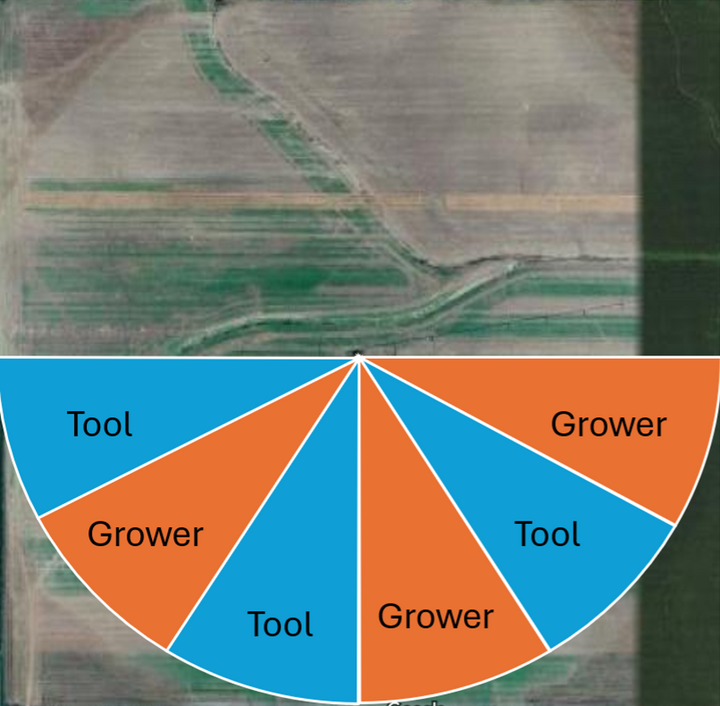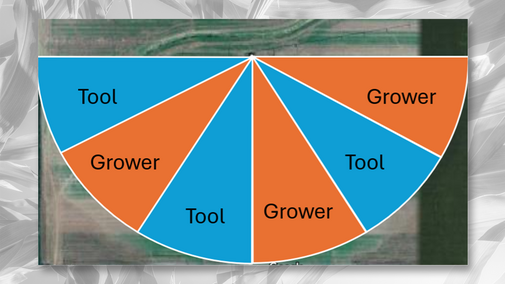Key Takeaways
Water Savings: In a 2024 Nebraska On-Farm Research Network field study using a commercial irrigation scheduling tool, researchers found tool-managed areas used less water than grower-managed areas.
Yield and Profitability: Despite reduced water use, there were no significant differences in yields or marginal net returns between the standard method and scheduling tool method.
Decision-Making Support: Scheduling tools help integrate complex factors (soil type, crop stage, weather, etc.), making irrigation decisions more data-driven and consistent.
Irrigation scheduling tools can help growers reduce water use while maintaining crop yields. In 2024, the Nebraska On-Farm Research Network (OFRN) highlighted this potential through a series of irrigation-focused trials.
Nebraska OFRN offers growers a chance to test new management practices on their own farms in collaboration with extension educators. The goal was to find ways to reduce input costs and sustain or enhance crop production — all while supporting environmental stewardship. By using replicated, field-scale research, OFRN trials provide growers with data-driven insights that can encourage the adoption of proven alternative practices.
A key focus in the 2024 growing season was a set of four irrigation scheduling trials — three in Platte County and one in Butler County. These trials compared the growers' standard irrigation decisions with those made using a commercial irrigation scheduling tool. Two trials were conducted on soybeans and two on corn. In each case, half of a center pivot was used for the trials. Three replications were managed using the grower’s usual approach, and the three sections used the scheduling tool to guide irrigation decisions.
Figure 1 shows an example of one trial in Platte County. A center pivot equipped with the FieldNET™ system by Lindsay enabled variable irrigation rates using speed control. This allowed each section of the pivot to apply different amounts of water based on the respective management approach, based on a speed control variable rate irrigation.

Table 1 summarizes the results. On average, the grower-managed sectors received 5.2 inches of irrigation during the 2024 growing season. In comparison, the tool-managed sectors used 1.2 inches less water. Corn fields saw an average savings of 1.5 inches, while soybean fields saved about 0.9-inch. Despite the reduced water use, yields and marginal net returns were statistically the same between the two approaches — meaning growers could potentially reduce irrigation without sacrificing profitability.
Irrigation decisions are influenced by multiple factors, including soil type, soil water holding capacity, crop growth stage, crop water use, weather conditions and pumping capacity among others, which can make irrigation decision complex. Using an irrigation scheduling tool helps integrate these variables, promoting more consistent and data-driven irrigation management.
The results can be found in the 2024 On-Farm Research Results book (pages 189-192). Feel free to contact Bruno Lena at (402) 563-4901 for more information.
Field | Treatment | Total irrigation (in) | Mean Yield (bu/ac) | Net Return ($/ac) |
|---|---|---|---|---|
Field 1 - Corn | Grower's Decision | 5.80 | 168 A | 723 A |
| Tool | 4.05 | 168 A | 722 A |
Field 2 - Corn | Grower's Decision | 5.50 | 327 A | 1408 A |
| Tool | 4.25 | 323 A | 1400 A |
Field 1 - Beans | Grower's Decision | 4.80 | 86 A | 933 A |
| Tool | 3.50 | 87 A | 941 A |
Field 2 - Beans | Grower's Decision | 4.80 | 93 A | 1001 A |
| Tool | 4.35 | 91 A | 989 A |
Note: Marginal net return based on $11/bu soybeans, $8/ac cost for irrigation scheduling tool technology, and $6/ac-in water. Values with the same letter are not significantly different at a 90% confidence level.

